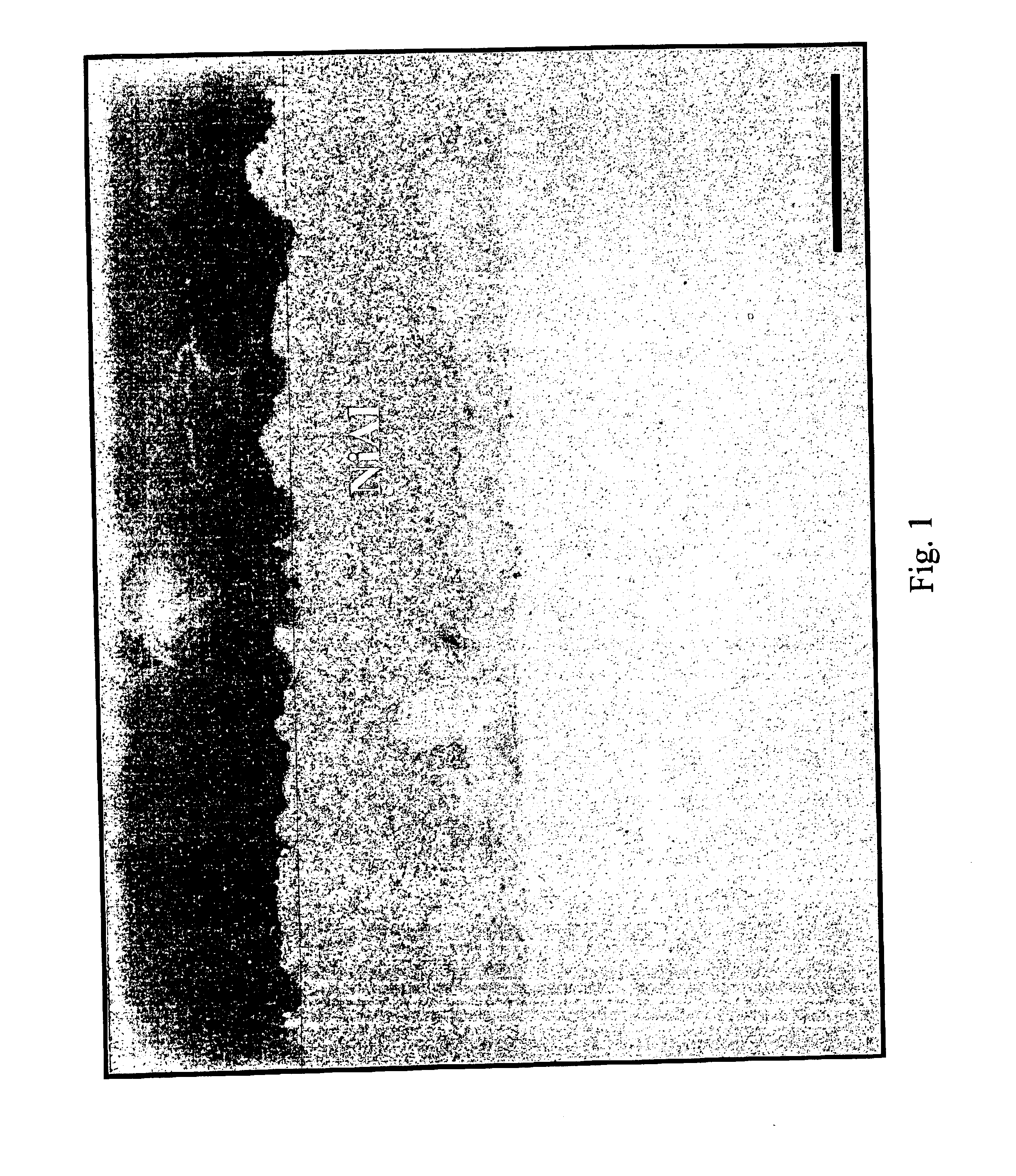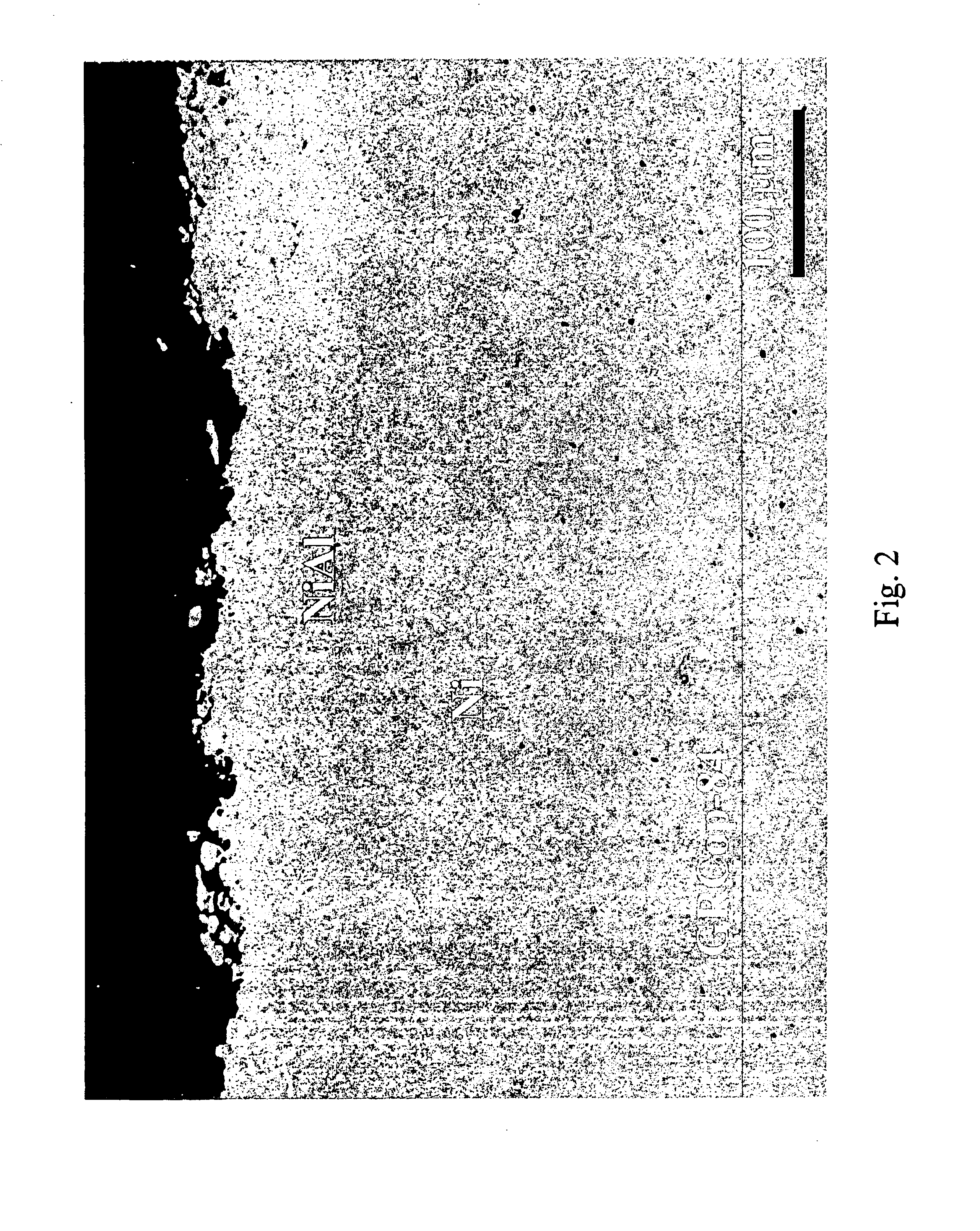Blanch resistant and thermal barrier NiAl coating systems for advanced copper alloys
a technology of thermal barrier and copper alloy, applied in the direction of superimposed coating process, soldering apparatus, manufacturing tools, etc., can solve the problems of reduced useful life of components, lhsub>2 /sub, and alloy properties undergo degradation, and achieve superior thermal cycling performance of coated alloys and suitable coatings.
- Summary
- Abstract
- Description
- Claims
- Application Information
AI Technical Summary
Benefits of technology
Problems solved by technology
Method used
Image
Examples
Embodiment Construction
An environmental and thermal barrier overlay coating system is described for advanced copper alloys for possible use in reusable launch vehicles and other similar applications. The present invention addresses issues related to the design and deposition of suitable coatings and bond coating technology for protecting an advanced copper alloy known as GRCop-84. Nickel aluminide (NiAl) top coats and nickel bond coats were applied to the surface of GRCop-84 disk specimens by a low pressure or vacuum plasma spraying process. Also, the present invention encompasses other bond coats using copper and copper-chromium alloys. Microstructural observations have been conducted on the as-sprayed and heat treated or hot isostatically pressed coating-substrate interfaces and verify the properties of those overlay coatings.
Additionally, chemical and thermal stability studies have been conducted both in air and hydrogen. Cyclic oxidation and propane-oxygen blow torch tests have been conducted in air t...
PUM
| Property | Measurement | Unit |
|---|---|---|
| thickness | aaaaa | aaaaa |
| temperatures | aaaaa | aaaaa |
| temperatures | aaaaa | aaaaa |
Abstract
Description
Claims
Application Information
 Login to View More
Login to View More - R&D
- Intellectual Property
- Life Sciences
- Materials
- Tech Scout
- Unparalleled Data Quality
- Higher Quality Content
- 60% Fewer Hallucinations
Browse by: Latest US Patents, China's latest patents, Technical Efficacy Thesaurus, Application Domain, Technology Topic, Popular Technical Reports.
© 2025 PatSnap. All rights reserved.Legal|Privacy policy|Modern Slavery Act Transparency Statement|Sitemap|About US| Contact US: help@patsnap.com



